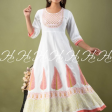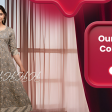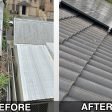In modern architecture and industrial applications, perforated metal and perforated panels are redefining design, functionality, and sustainability. These innovative materials provide a perfect combination of aesthetics and utility, making them popular across commercial buildings, residential spaces, and industrial settings. Their versatility, strength, and adaptability make them indispensable for both decorative and structural purposes.
What Is Perforated Metal?
Perforated metal refers to sheets of metal that have been manually or mechanically punched with patterns of holes, slots, or decorative shapes. The holes can be round, square, slotted, or custom-designed depending on the application. This process not only enhances the appearance of the metal but also improves its performance in terms of ventilation, light transmission, and weight reduction.
The metals commonly used for perforation include stainless steel, aluminum, copper, brass, and galvanized steel. Each material offers distinct advantages. For example, aluminum is lightweight and corrosion-resistant, making it ideal for exterior applications, while stainless steel offers high strength and durability.
Benefits of Using Perforated Metal
One of the most compelling advantages of perforated metal is its multifunctionality. Here are some of the top benefits:
- Improved Airflow and Ventilation
Perforated metal sheets are widely used in HVAC systems, computer enclosures, and server racks due to their ability to facilitate airflow. They help regulate temperature while protecting the internal components. - Aesthetic Appeal
Architects and designers favor perforated metal for its sleek, modern look. The variety of patterns and finishes allows for creative design solutions in facades, ceilings, and partitions. - Noise Reduction
When used in acoustic panels or ceilings, perforated metal can help control and reduce sound levels. This is especially beneficial in office buildings, schools, and auditoriums. - Energy Efficiency
In exterior cladding, perforated metal can reduce solar heat gain while still allowing natural light to pass through. This can significantly cut down on air conditioning costs and reduce the carbon footprint. - Security and Safety
Perforated metal provides a strong barrier while still allowing visibility and airflow. It’s commonly used in fencing, machinery guards, and stair treads for safety.
Understanding Perforated Panels
A perforated panel is a broader term that includes not only metal but also other materials like wood, MDF, or plastic that have been perforated. However, in industrial and architectural usage, it typically refers to perforated metal panels designed for facades, ceilings, sunscreens, or balustrades.
Perforated panels offer a dynamic balance between transparency and enclosure. They allow light and air to flow while maintaining privacy and visual interest. As a result, they are increasingly featured in modern architecture for cladding systems, interior walls, and even artistic installations.
Applications of Perforated Panels in Architecture
- Building Facades
One of the most innovative uses of perforated panels is in facade systems. These panels can dramatically change the external appearance of a building while offering benefits such as shade, ventilation, and reduced energy consumption. - Interior Design
In interiors, perforated panels are used to create feature walls, decorative partitions, and ceilings that blend style with acoustics. They add texture and depth to otherwise flat surfaces. - Balconies and Staircases
Perforated panels used in railings and balconies not only provide safety but also add a contemporary aesthetic. The patterns can be customized to complement the overall design of the building. - Retail and Commercial Spaces
Perforated panels are a favorite in retail environments due to their lightweight and modern look. They are used in display units, shelving, and signage for a clean and organized appearance. - Urban Infrastructure
Bus shelters, parking garages, public benches, and noise barriers on highways utilize perforated panels for their durability and visual integration into the environment.
Customization and Fabrication
Both perforated metal and perforated panels are highly customizable. Modern CNC and laser-cutting technologies allow for precision cutting of intricate patterns that can be tailor-made for specific design requirements. Additionally, these materials can be finished in a wide variety of coatings, including powder coating, anodizing, and galvanizing to increase durability and match any design palette.
Clients can choose from standard hole patterns or create unique artistic designs that reflect branding, cultural elements, or artistic expression. This level of customization ensures that no two applications need to look the same.
Sustainability and Environmental Impact
As sustainability becomes a central concern in construction, perforated metal emerges as an environmentally responsible choice. Many metals used are recyclable and reusable, reducing waste. Moreover, the reduced weight of perforated materials means lower transportation costs and less energy consumption in installation.
In green buildings, perforated panels contribute to LEED certification by enhancing energy efficiency and providing innovative passive solar control.
Conclusion
Perforated metal and perforated panels are not just construction materials—they are powerful design tools. Their ability to combine strength with style, function with form, makes them essential in contemporary architecture and industrial design. Whether you’re looking to elevate the exterior of a building, improve acoustics in a conference room, or create secure yet breathable enclosures, these materials provide the flexibility and performance needed for innovative solutions.
As design trends continue to evolve, the use of perforated materials is expected to grow, offering architects, builders, and designers a reliable and aesthetically pleasing option for years to come.






